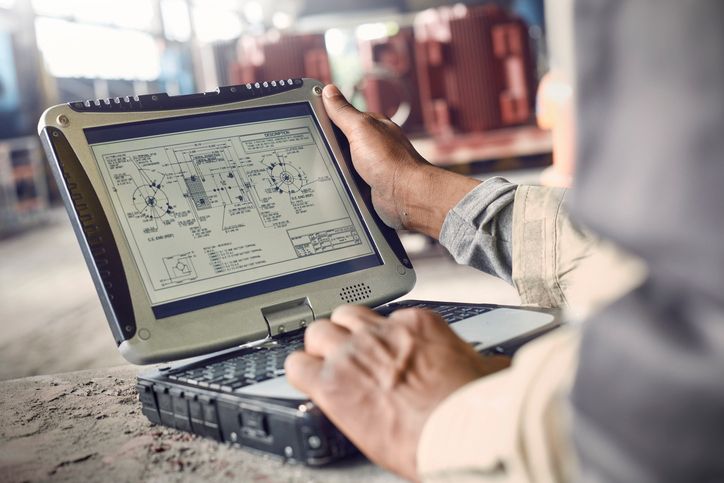 While manufactures are eager to implement smart initiatives to improve operations and increase efficiencies, the return on investment isn’t always clear.
While manufactures are eager to implement smart initiatives to improve operations and increase efficiencies, the return on investment isn’t always clear.
Tom Craven, Vice President of product Strategy at MMAMAC, told Design News that it’s essential to find a clear return on investment before implementing connected manufacturing technologies. Producing a solid ROI, usually in the form of improved efficiency, quality or optimization of plant processes, is the “ultimate goal” of intelligent manufacturing systems, Craven said.
Yet the initial investment in smart manufacturing initiatives can be high, and the required IT and OT hours can be difficult to predict. While manufacturers are already seeing clear ROI from smart applications that offer predicative maintenance of equipment and greater visibility into operations, others such as artificial intelligence, aren’t so clear.
“Manufacturing leaders typically care less about the technology itself and more about the bottom line it delivers.”
Accenture recently noted in a report IoT and smart technologies typically follows four phases of adoption. It starts with initiatives to produce better asset utilization, operational cost reductions and improvements in worker productivity. From there, they will then move on to new products and services supported by these technologies and to an “outcome based” economy where customers will use new connected ecosystems and pay-per-outcome. The final stage will be an “autonomous pull economy” where smart technologies can sense demand and create end-to-end automation.
Accenture noted the pace of adoption by manufactures will “vary greatly.” “In our experience companies that successfully extract value from any new technology are not only detailed forward planners. They also follow a roadmap flexible enough to allow them to change course when circumstances require it,” Accenture said.
Pete Kalish, Director of Business Development at O’Brien & Gere, told Automation World that while most new technology investments meet specifications, they don’t always deliver the promised impact. Many business leaders are frustrated at the performance gap and don’t know where to turn, Kalish said. Manufacturing leaders typically care less about the technology itself and more about the bottom line it delivers. “They want capital investments to increase profits. And they want those financial gains to happen in a timeframe that supports the business’ financial goals,” Kalish said.
The problem is that in manufacturing, process and operational issues don’t always arise until investments are placed in service. For example, moving to a system that collects more data can impact network configuration and cybersecurity procedures that may not be apparent until the new system is operational. And manual processes that can be adjusted by trained operators to handle variations can become more sensitive when automated.
To better align technological and financial goals, operations leaders, engineers, and equipment suppliers need to “think more like investors,” Kalish said.
Large scale smart factories that are largely automated and demand-driven are still year away, Accenture said. Yet the basic building blocks of smart production, such as sensors and control mechanisms and software solutions, are already here and can enable manufacturers to improve efficiencies and reduce risks and performance bottlenecks.
Even if the ROI is not as impressive as one would like, it’s important to consider competitiveness as no manufacturer wants to be left behind on the technology curve, Craven said. “What happens to your company if you don’t develop smart manufacturing? Do you want to be an Uber or a Yellow cab?” Craven said.

Chief Executive Group exists to improve the performance of U.S. CEOs, senior executives and public-company directors, helping you grow your companies, build your communities and strengthen society. Learn more at chiefexecutivegroup.com.
0

1:00 - 5:00 pm
Over 70% of Executives Surveyed Agree: Many Strategic Planning Efforts Lack Systematic Approach Tips for Enhancing Your Strategic Planning Process
Executives expressed frustration with their current strategic planning process. Issues include:
Steve Rutan and Denise Harrison have put together an afternoon workshop that will provide the tools you need to address these concerns. They have worked with hundreds of executives to develop a systematic approach that will enable your team to make better decisions during strategic planning. Steve and Denise will walk you through exercises for prioritizing your lists and steps that will reset and reinvigorate your process. This will be a hands-on workshop that will enable you to think about your business as you use the tools that are being presented. If you are ready for a Strategic Planning tune-up, select this workshop in your registration form. The additional fee of $695 will be added to your total.

2:00 - 5:00 pm
Female leaders face the same issues all leaders do, but they often face additional challenges too. In this peer session, we will facilitate a discussion of best practices and how to overcome common barriers to help women leaders be more effective within and outside their organizations.
Limited space available.

10:30 - 5:00 pm
General’s Retreat at Hermitage Golf Course
Sponsored by UBS
General’s Retreat, built in 1986 with architect Gary Roger Baird, has been voted the “Best Golf Course in Nashville” and is a “must play” when visiting the Nashville, Tennessee area. With the beautiful setting along the Cumberland River, golfers of all capabilities will thoroughly enjoy the golf, scenery and hospitality.
The golf outing fee includes transportation to and from the hotel, greens/cart fees, use of practice facilities, and boxed lunch. The bus will leave the hotel at 10:30 am for a noon shotgun start and return to the hotel after the cocktail reception following the completion of the round.